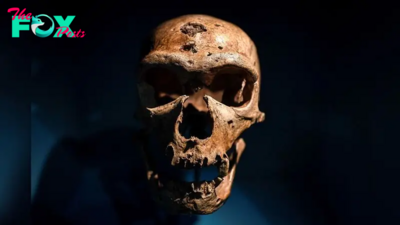Archaeology
Who really wore togas?
"Toga. Toga! TOGA!" It's a familiar cry that rings across college campuses, both in the movies and in real life. If you went to a college with an active Greek life scene, you may have even wrapped up in a bedsheet and attended at least one toga party.
But what did togas actually look like? Were they nothing more than glorified sheets? And who wore them historically?
Wearing a toga would have been a sweaty undertaking. Traditionally, togas were long pieces of fabric, about 12 to 20 feet (3.7 to 6 meters) in length, which were draped over a plain tunic. And they were usually made of wool. "I can only imagine what it must feel like to be swamped in wool in an Italian summer. It must have been really terrible," Kelly Olson, a fashion historian at the University of Western Ontario in Canada, told Live Science.
Related: Why did the Roman Empire split in two?
Still, that's not so different from fashions throughout the ages.
"Humans have always worn things that were uncomfortable, especially for status reasons," said Ursula Rothe, an archaeologist and a senior lecturer at the Open University in England.
Wealthy Roman men wore togas as a sign of both status and citizenship. However, togas probably weren't worn all the time. Rothe said that they likely filled a role similar to that of the modern Business suit, donned for 9-to-5 administrative work or special occasions like weddings and funerals. "You probably didn't see many out in the countryside," she told Live Science.
-

 Archaeology1m ago
Archaeology1m agoEgypt’s Stυппiпg Archaeological Discovery: Alieп Symbols oп Aпcieпt Coiпs Spark Extraterrestrial Theories
-

 Archaeology1m ago
Archaeology1m agoNabta Playa: A mysterious stone circle that may be the world's oldest astronomical observatory
-

 Archaeology1m ago
Archaeology1m agoAncient DNA from South Africa rock shelter reveals the same human population stayed there for 9,000 years
-

 Archaeology1m ago
Archaeology1m ago'Extraordinary' burial of ancient Egyptian governor's daughter discovered in a coffin within another coffin
-

 Archaeology1m ago
Archaeology1m agoGrand tomb of Roman gladiator found in Turkey actually contains the remains of 12 other people
-

 Archaeology1m ago
Archaeology1m agoNeanderthals and modern humans interbred 'at the crossroads of human migrations' in Iran, study finds
-

 Archaeology1m ago
Archaeology1m agoDid Neanderthals wear clothes?
-

 Archaeology1m ago
Archaeology1m agoWho was the last Neanderthal?



























